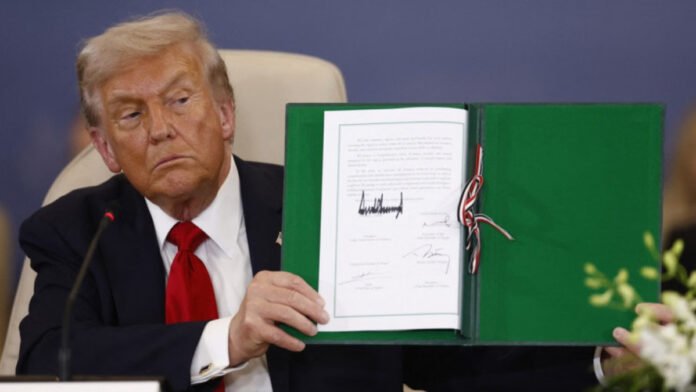In a landmark diplomatic move, the United States, Egypt, Qatar, and Turkey signed a joint declaration on Monday to reinforce the Gaza ceasefire agreement and reaffirm their commitment to peace and stability in the Middle East. The signing took place during a high-level summit in Sharm el-Sheikh, Egypt, marking what leaders described as a renewed push toward long-term regional harmony.
US President Donald Trump, speaking after the signing, called it “a tremendous day for the Middle East,” noting that the declaration was aimed at building sustained cooperation and trust among nations to end cycles of violence.
The joint declaration commits the four signatory nations to work collectively to implement and maintain the Gaza ceasefire while promoting principles of equality, human rights, and security for both Palestinians and Israelis. It outlines the need for diplomatic cooperation, humanitarian assistance, and the reconstruction of conflict-affected areas in Gaza.
While the agreement stops short of explicitly endorsing Palestinian statehood, it recognises the Gaza crisis as part of the broader Palestinian question and stresses the importance of dialogue and cooperation over military engagement. Notably, neither Israel nor Hamas were signatories to the declaration, although both remain central to the ongoing conflict.
The deal follows the recent Gaza peace initiative that saw Israel and Hamas agree to a swap of hostages and prisoners, alongside a cessation of active conflict. The Sharm el-Sheikh summit, attended by leaders and representatives from over twenty countries, also discussed mechanisms for Gaza’s reconstruction, governance, and humanitarian coordination.
Under the declaration, the four nations agreed to address future disputes through diplomatic means rather than military action. The document reaffirms their shared intention to counter extremism and radicalisation while promoting a climate of tolerance, peace, and mutual respect in the region.
Critics have described the declaration as aspirational, noting its lack of clear enforcement mechanisms or detailed implementation pathways. Concerns persist over how reconstruction funds will be managed and how political transitions in Gaza will unfold without direct involvement from the primary stakeholders.
Despite these uncertainties, the declaration marks a rare instance of collective diplomatic resolve in a deeply divided region. Observers view it as an important step toward consolidating the fragile ceasefire and preventing renewed hostilities that have plagued Gaza in recent years.
Whether the Gaza Declaration translates into tangible peace will depend on continued commitment from the international community and restraint from regional actors. For now, the agreement represents cautious optimism in a conflict that has long defied resolution.

























